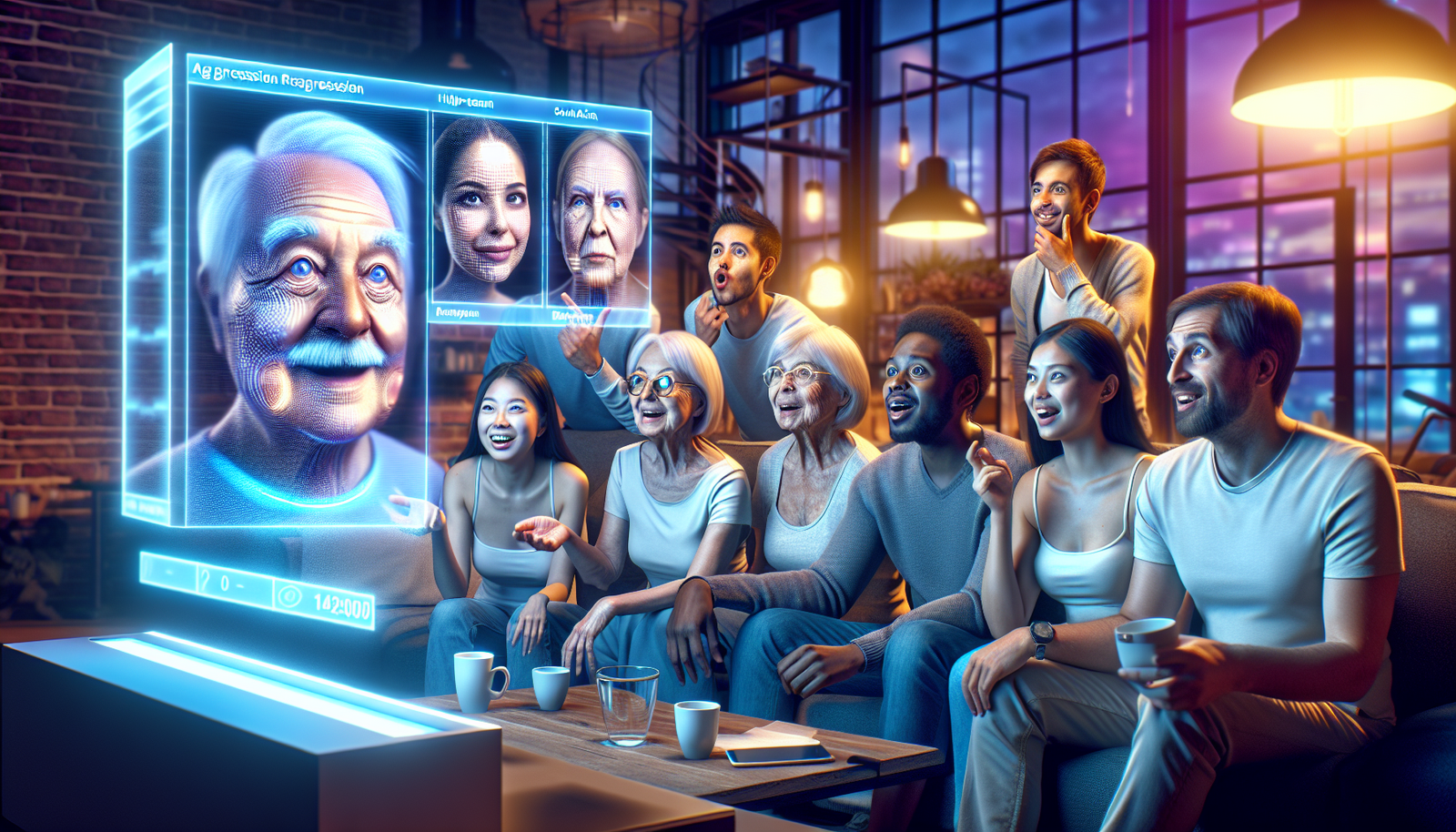The technological evolution transforms our understanding of the human age. A new algorithm for personalized age transformation embodies this advancement. Developed by renowned researchers, this groundbreaking model uses artificial intelligence to shape faces through different stages of life.
Far from simplistic filters, this innovative method analyzes the complexity of faces, taking into account elements such as genetics, lifestyle, and ethnicity. Potential applications range from the entertainment industry to social media platforms, offering virtually endless possibilities for digital rejuvenation. By enabling realistic age simulations, this algorithm redefines the norms of visual expression and community interaction.
Development of MyTimeMachine
Researchers from the University of North Carolina at Chapel Hill and the University of Maryland have recently designed MyTimeMachine (MyTM), an artificial intelligence algorithm enabling personalized age transformation of human faces. This innovative method has the ability to make faces appear younger or older in images or videos, taking into account subjective factors influencing aging.
Features of the Algorithm
Presented in an article published on the preprint server arXiv, this algorithm can be integrated into image editing platforms aimed at the general public, while being a valuable tool for the film, television, and entertainment industries.
Research on virtual aging techniques in visual effects (VFX) has shown that they often require elaborate prosthetics and makeup, uncomfortable practices for actors during shooting. Roni Sengupta, the researcher in charge of the study, specified that this innovation addresses this constraint.
Inspiration and Previous Challenges
Sengupta mentions that the inspiration for this project comes from the film ‘The Irishman’ released in 2019. Although this film utilized revolutionary VFX to modify the age of the actors, this technique was costly and required considerable manual effort, limiting its use in other productions.
While social media filters already allow for the addition of aging or rejuvenation effects, their renditions are often simplistic or even caricatured. This observation motivated the researchers to wonder if realistic age transformations could be made accessible, fully automated, and reliable.
Operation of MyTM
MyTM is based on a generative neural network. This algorithm was designed to simulate the entire aging trajectory of specific individuals, producing realistic images at various stages of their lives. By using about 50 images representing the last 20 years, MyTM predicts the aging progress from 0 to 100 years.
“Our approach, unlike traditional methods, requires only a few images of the person to provide accurate and personalized age modifications,” stated Luchao Qi, a graduate student leading the project. MyTM’s ability to produce strikingly realistic simulations, considering various external parameters such as ethnicity and lifestyle, represents a significant achievement.
Practical Applications
MyTM could transform practices in the film sector by simplifying aging and rejuvenation effects. This could reduce costs and production time while ensuring high-quality results. Low to medium budget films, often limited by unconvincing VFX effects, would particularly benefit from this technology.
The researchers also envision applications in other fields. MyTM could enhance social media filters or provide more realistic simulations for marketing or health awareness campaigns. Platforms designed to emotionally support bereaved individuals through this technology are being considered.
Sustainability and Optimization of the Technology
The researchers aim to further reduce the image requirements needed to power MyTM. Currently, the model requires about 50 images, but future work aims to refine the system to function effectively with just a few images while maintaining the required quality. Other improvements focus on the speed and efficiency of the system, crucial for dynamic use, particularly for real-time aging of virtual avatars.
By adopting more advanced generative algorithms, such as diffusion models, scientists hope to significantly expand the scope of applications for their research.
More information: Luchao Qi et al., MyTimeMachine: Personalized Facial Age Transformation, arXiv (2024). DOI: 10.48550/arxiv.2411.14521
Citation: AI-powered algorithm enables personalized age transformation for human faces (2024, December 19) retrieved from Tech Xplore.
Frequently Asked Questions about the AI Algorithm for Human Facial Age Transformation
How does the age transformation algorithm for faces work?
The algorithm uses a generative neural network to model the evolution of a person’s face throughout their life, based on a limited number of images provided as input.
What types of images are needed to use this algorithm?
In general, about 50 selfies of a person, captured at different times in their life, are necessary to achieve realistic and personalized results.
Is it possible to realistically modify a person’s face age?
Yes, the algorithm is designed to produce realistic age simulations, taking into account various factors such as skin texture and facial structure.
Which sectors can benefit from this technology?
This technology can be used in film, television, image editing, as well as for marketing and health awareness applications.
Is this technology accessible to low-budget content creators?
Yes, the algorithm enables aging or rejuvenation effects to be produced in a more accessible manner for low or medium budget filmmakers and creators.
Are there ethical implications associated with the use of this algorithm?
Yes, it is essential to consider the ethical implications, particularly regarding the consent of individuals whose faces are modified and the impact on the perception of age and appearance.
How does the algorithm handle individual differences such as ethnicity and lifestyle?
The algorithm takes into account a variety of factors, including ethnicity, lifestyle, and genetics, to ensure that age transformations are as accurate and realistic as possible.
Can this technology be used to help bereaved individuals?
Yes, the algorithm could be used to create personalized content that helps individuals cope with grief, although this must be done sensitively and cautiously.
What is the future of this technology concerning facial evolution?
Researchers aim to improve the speed and efficiency of this algorithm to adapt it for dynamic applications, such as transforming faces in interactive media.
Does using this algorithm require any particular technical skills?
While some technological knowledge is beneficial, the system is designed to be accessible to a wide range of users, including those without deep technical training.






